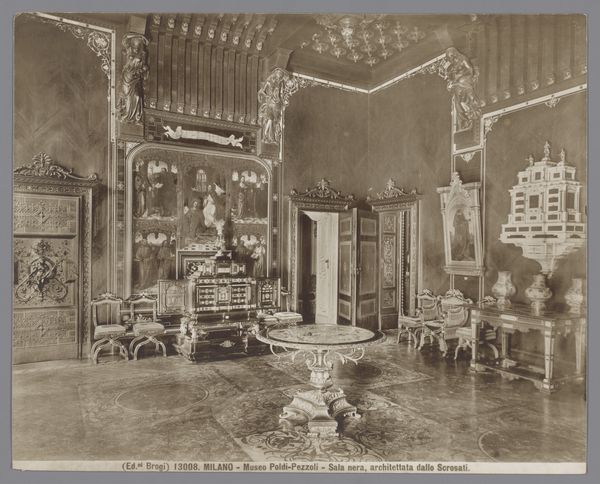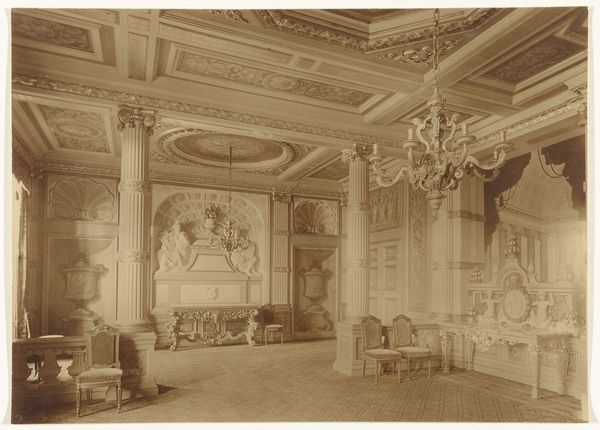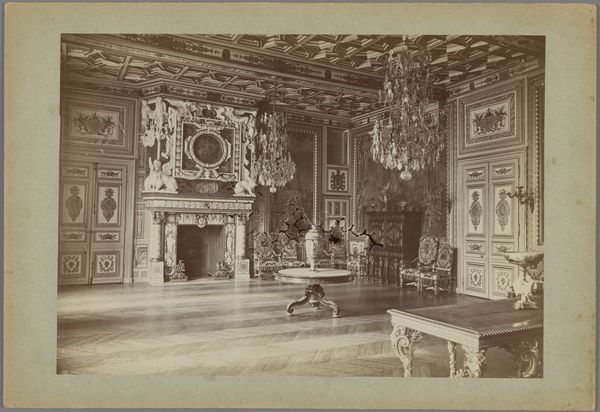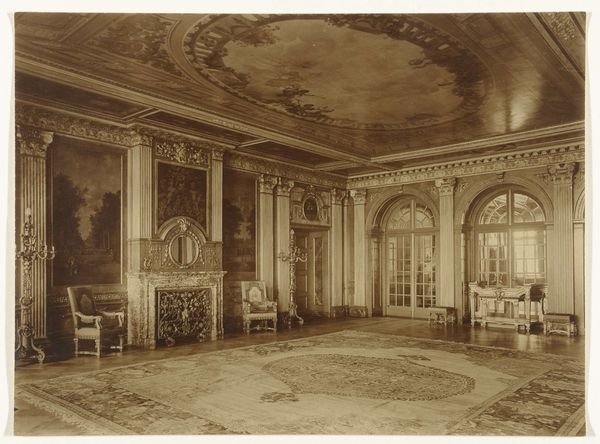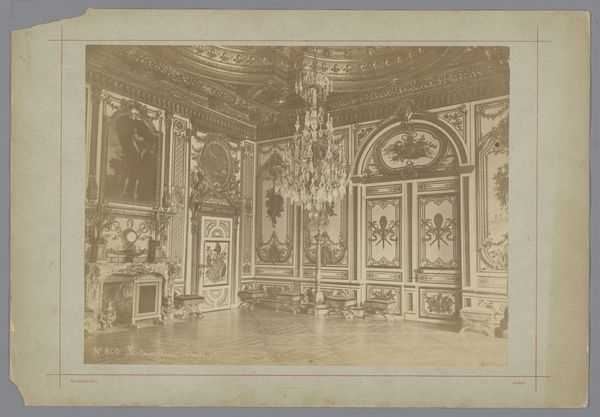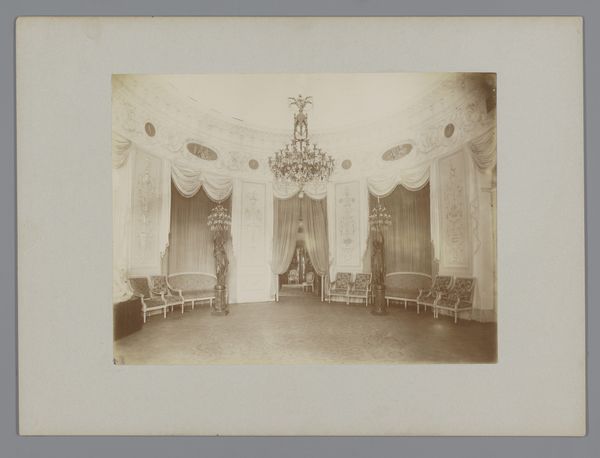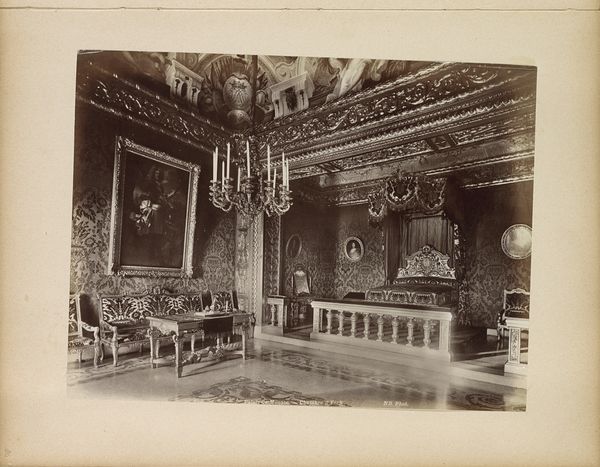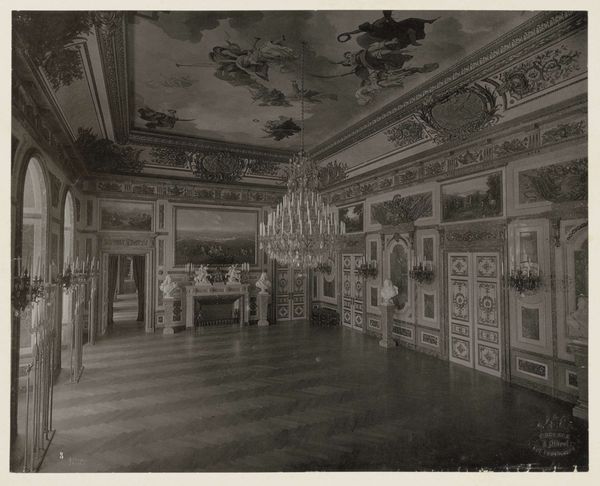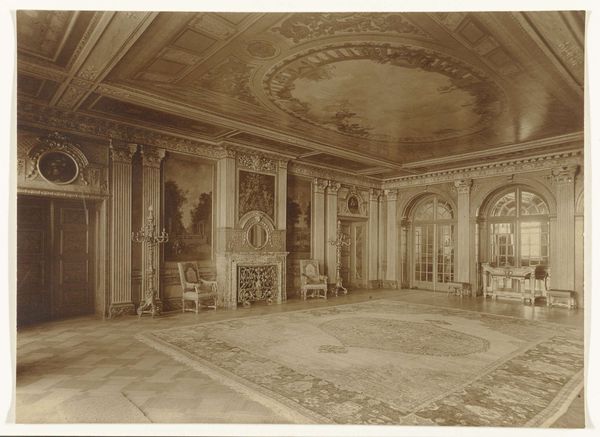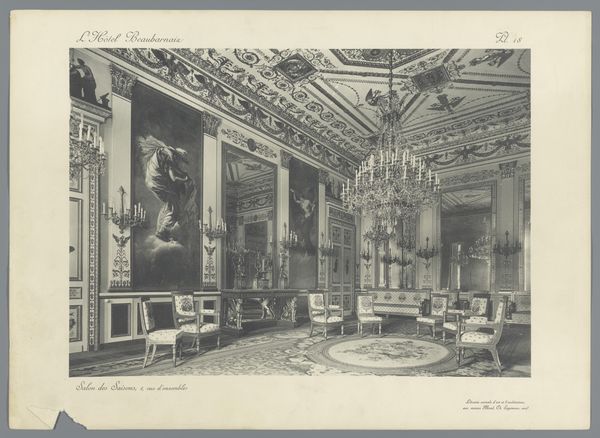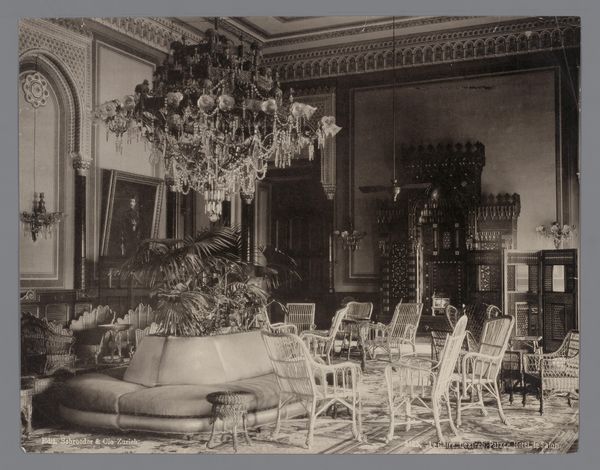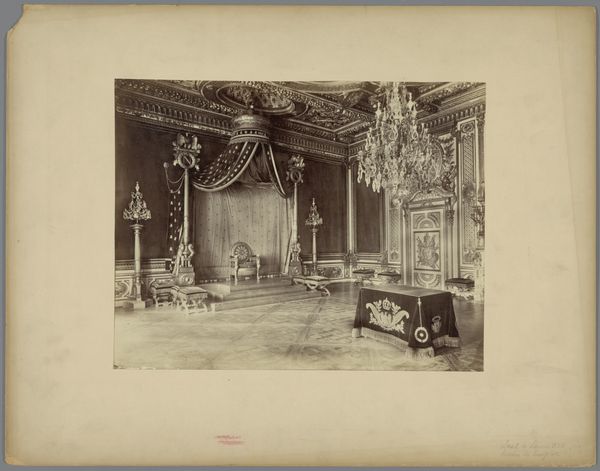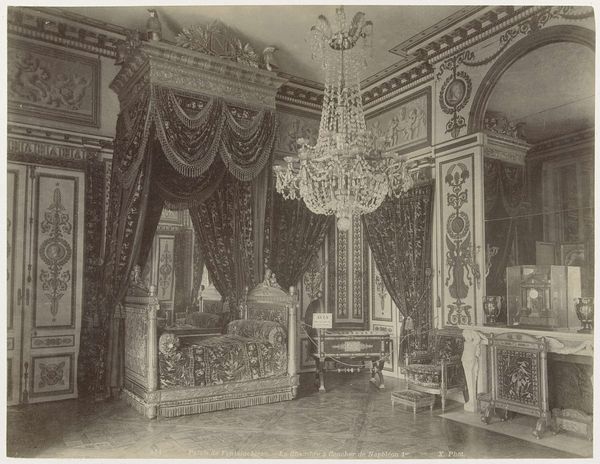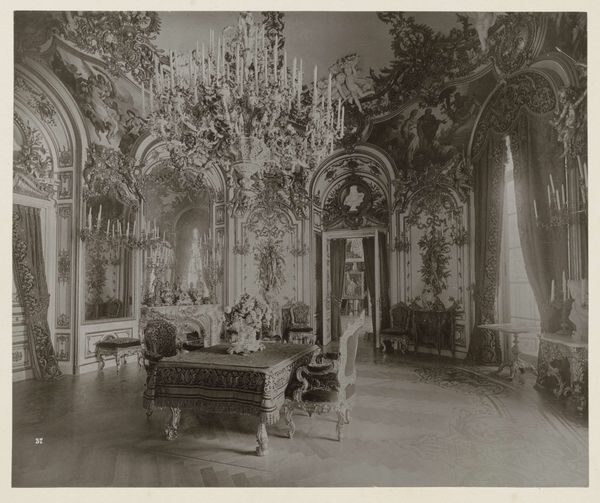
photography, albumen-print
#
portrait
#
landscape
#
photography
#
orientalism
#
19th century
#
paper medium
#
albumen-print
Dimensions: height 200 mm, width 259 mm
Copyright: Rijks Museum: Open Domain
Curator: This albumen print, believed to have been taken by J. André Garrigues sometime between 1860 and 1900, showcases the Throne Room at the Bardo Museum near Tunis. It's quite an amazing record. Editor: Immediately, I'm struck by how the light interacts with the crystal chandeliers – it’s almost oppressive. There's such weight, both literal and symbolic, radiating from them. I also see immediately that this is a photographic process on paper support, right? Curator: Precisely. It's fascinating to think about how this photograph was crafted – an incredibly involved process in those days and how it freezes a space intended to communicate permanence and power. It's labeled at the bottom of the photograph as "Salle du trône au Bardo", in other words Throne Room in Bardo, adding historical context through material evidence. Editor: It's more than just a space; it’s a deliberate construction, layer upon layer, from the patterned carpet to the portraits on the walls, which I suppose would each have some symbolism. How the materials came together, how they were sourced and placed. Labor and craftsmanship seem embedded here. Curator: Yes! And those portraits lining the walls offer an interesting detail: like gazing into a room filled with silent watchers. What kind of story does it construct, visually, materially, about governance and visibility? What do you make of it? Editor: I think of all of the hands that have cleaned and crafted those chandeliers to make them glimmer in the light for rulers. I see that even the composition highlights a relationship between craft, consumption, and power that must have permeated court life. Curator: Absolutely. This image opens such questions. I walk away pondering all of the unrecoverable parts of history – the things and actions forgotten from any physical and narrative accounting. It truly shows a kind of ghost. Editor: I agree. It underscores the role of photographs and paper prints like these in freezing moments, documenting material choices that spoke to power. It’s a powerful image—heavy with the weight of history, class and material privilege.
Comments
No comments
Be the first to comment and join the conversation on the ultimate creative platform.
